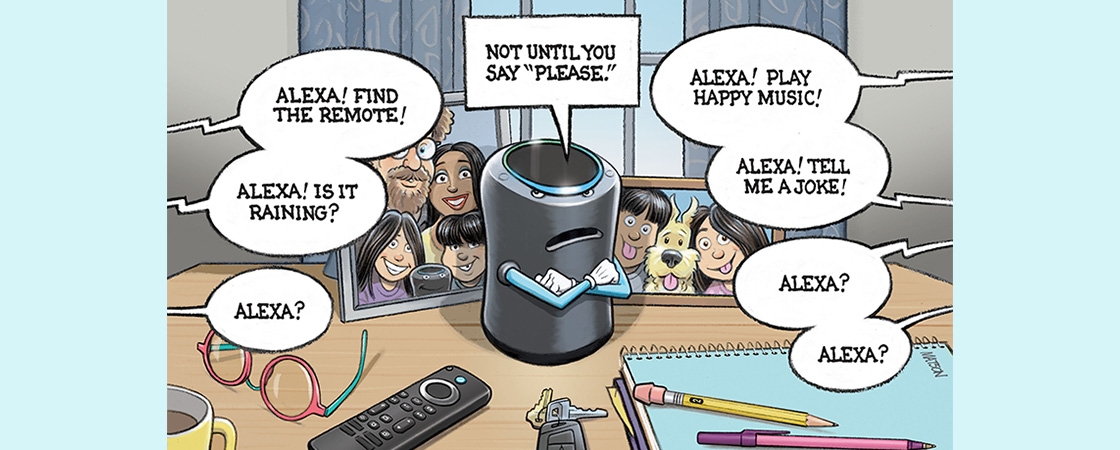Ella overslept, and now she’s in a rush. In need of a boost, she turns to her family’s voice assistant.
“Alexa, play Olivia Rodrigo.”
While the beat gets going, she considers her outfit. Is it warm enough for shorts?
“Alexa, tell me the weather.”
As she wolfs down breakfast, Ella asks Alexa what time it is. Whoa! The bus arrives in two minutes! Ella grabs her backpack and heads for the door. Wait—she’s missing something.
“Alexa, find my phone.”
Finally, Ella settles into her seat on the bus with a sigh of relief. She made it—and she has Alexa to thank.
Except Ella doesn’t thank Alexa, ever. She never says “please” either.
But . . . should she?

